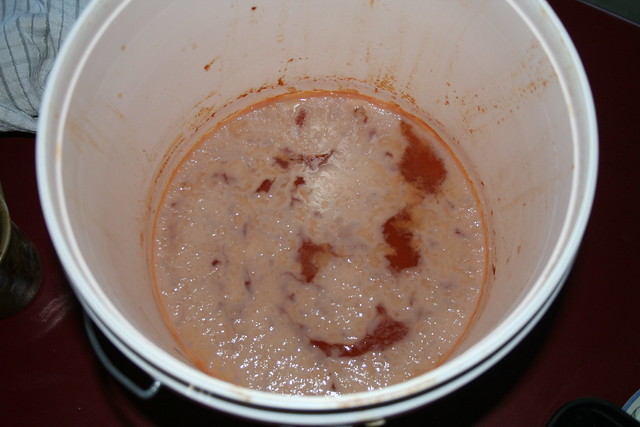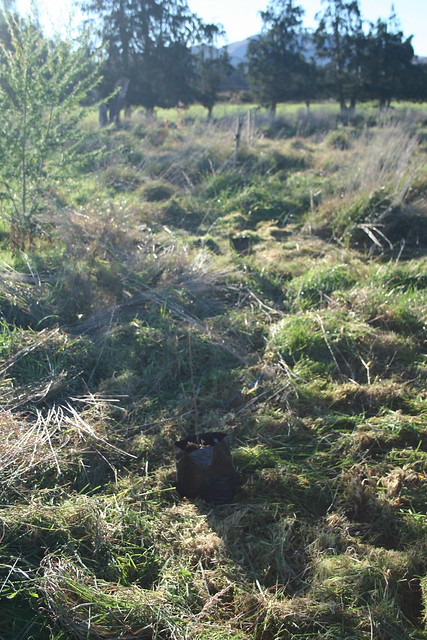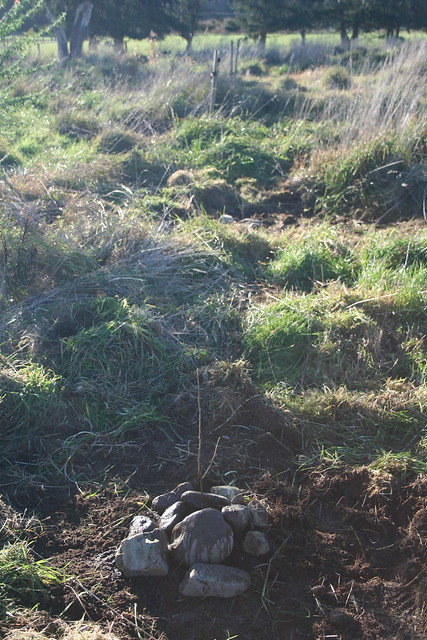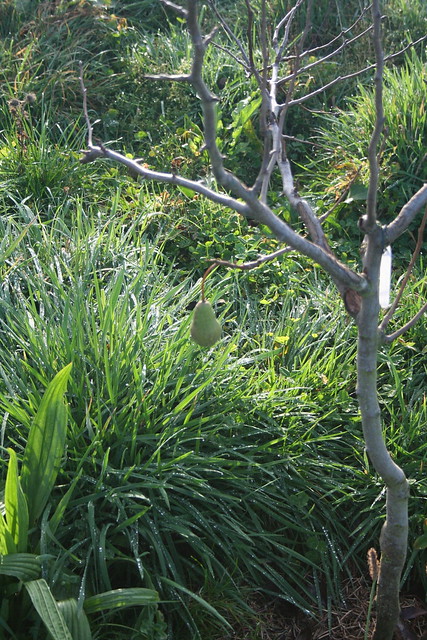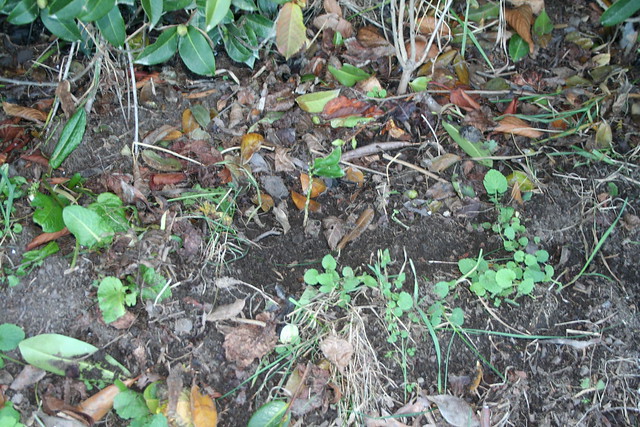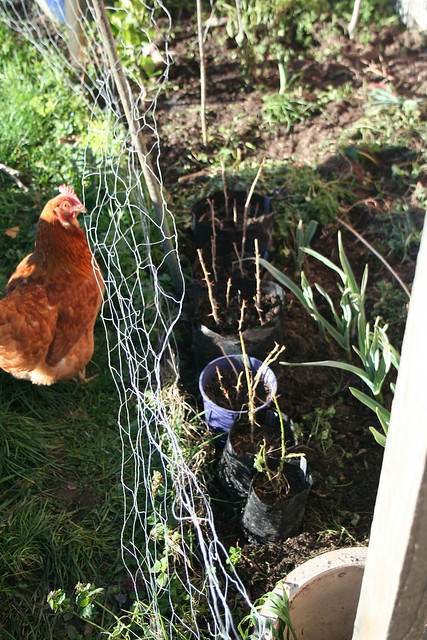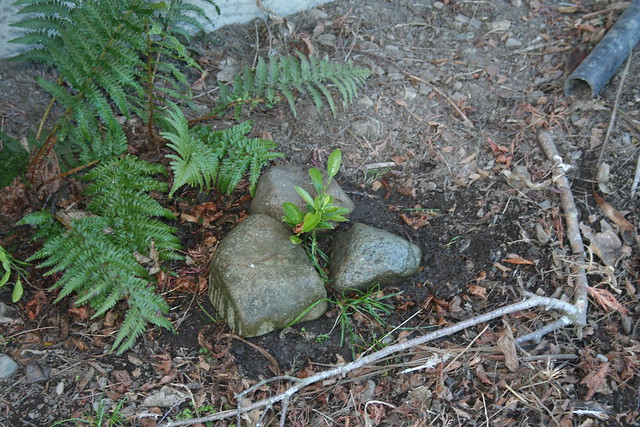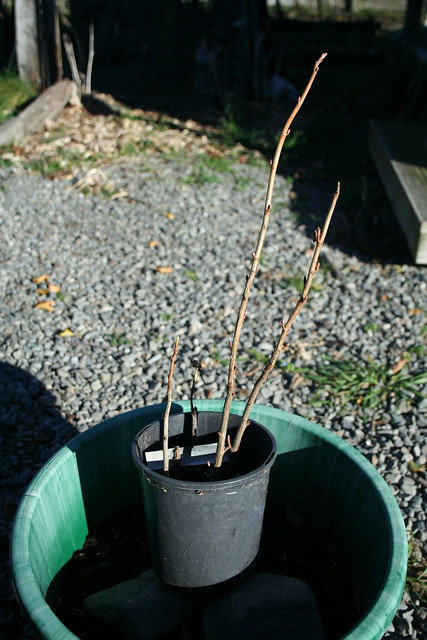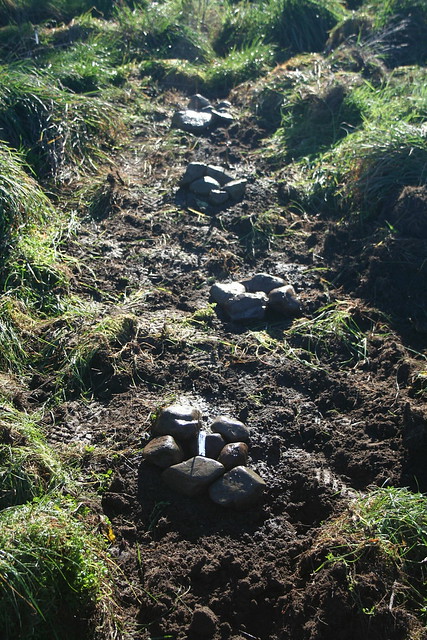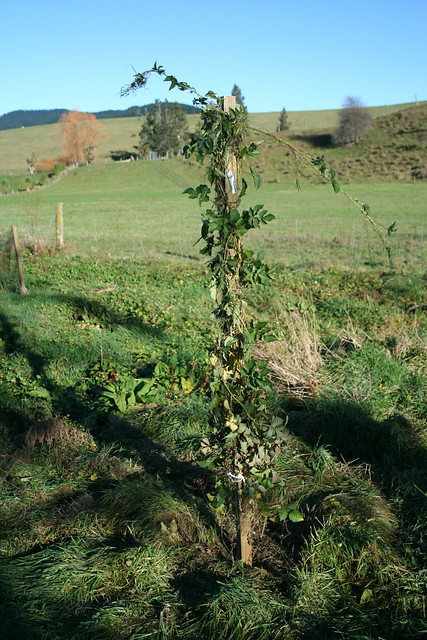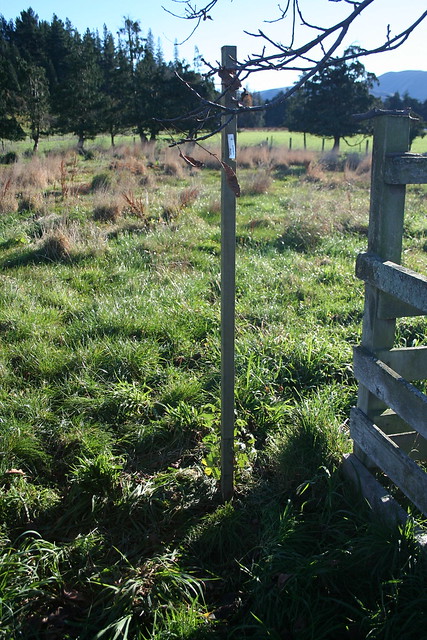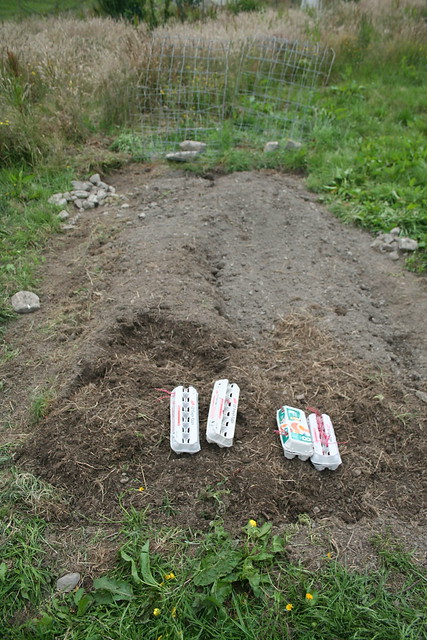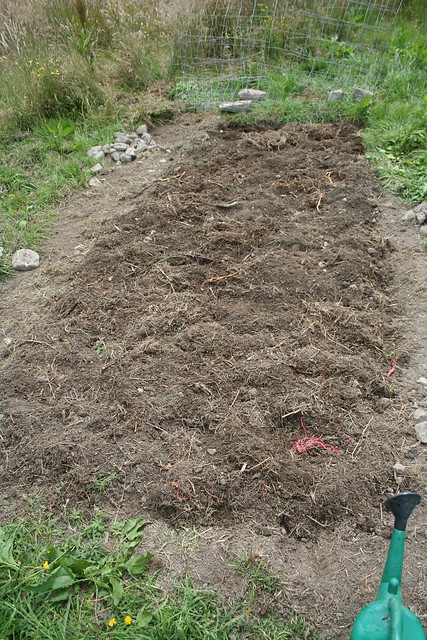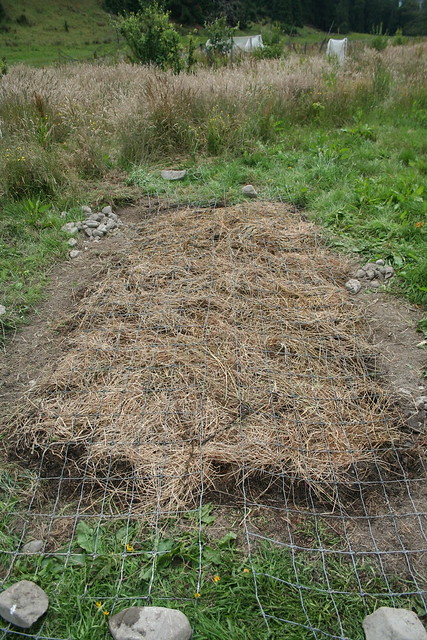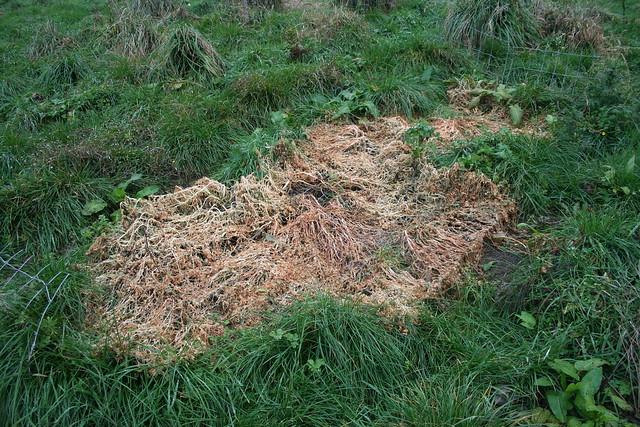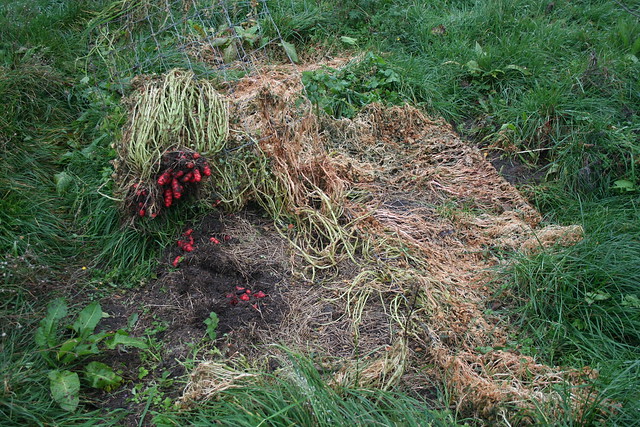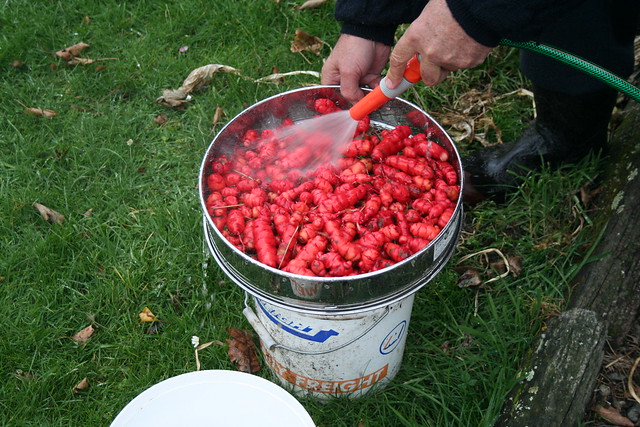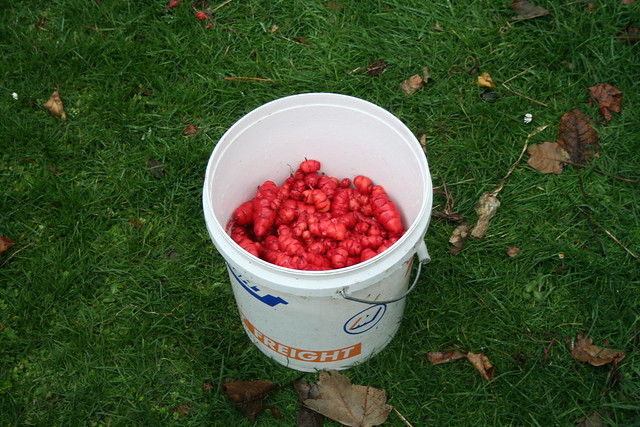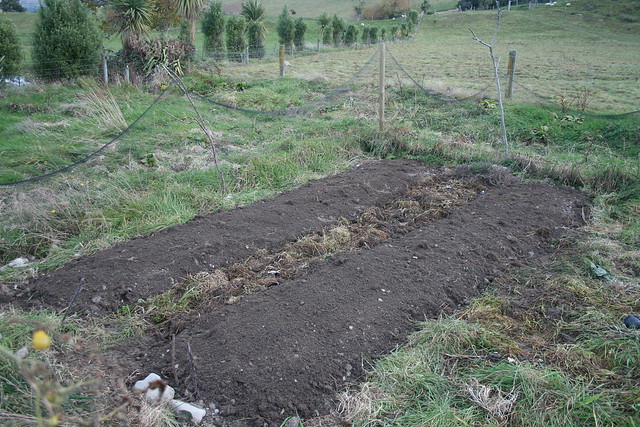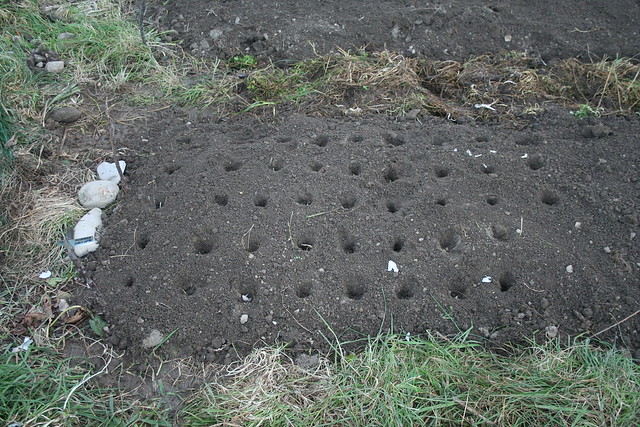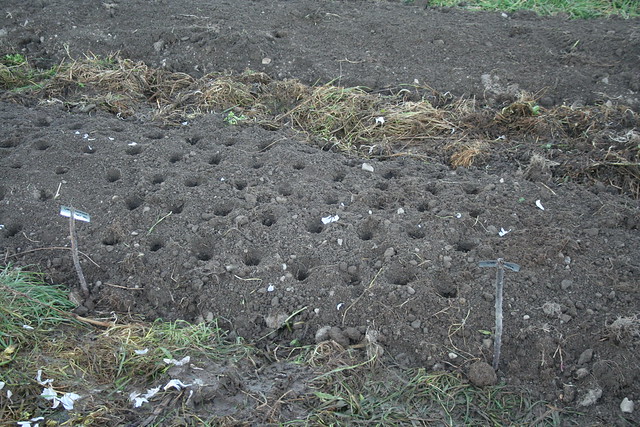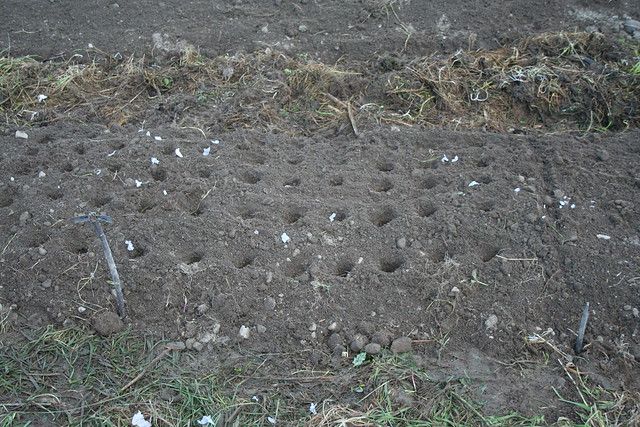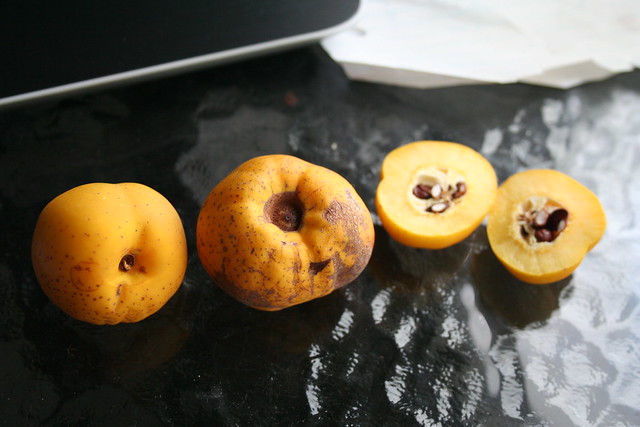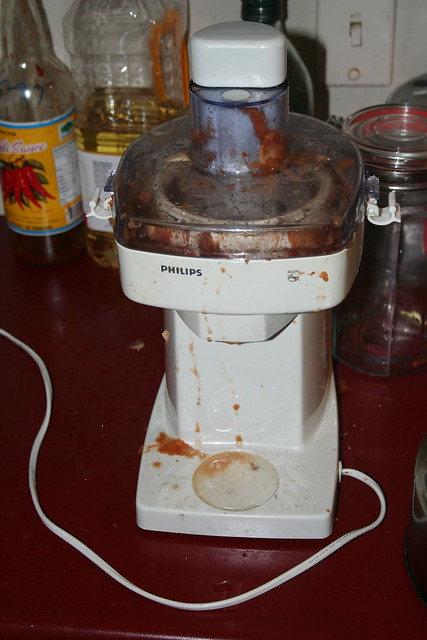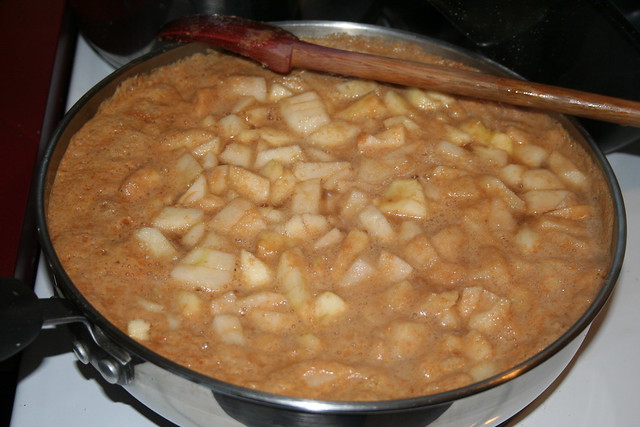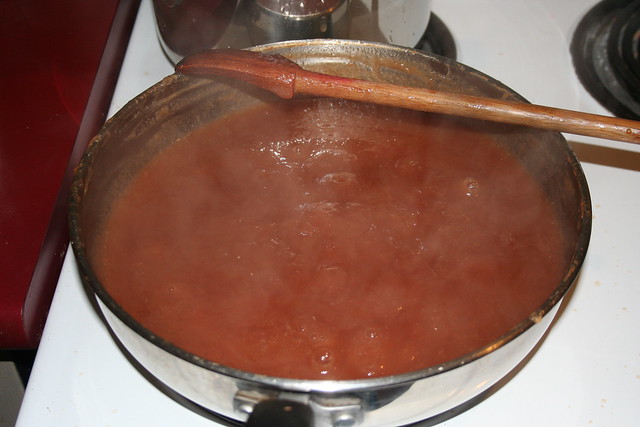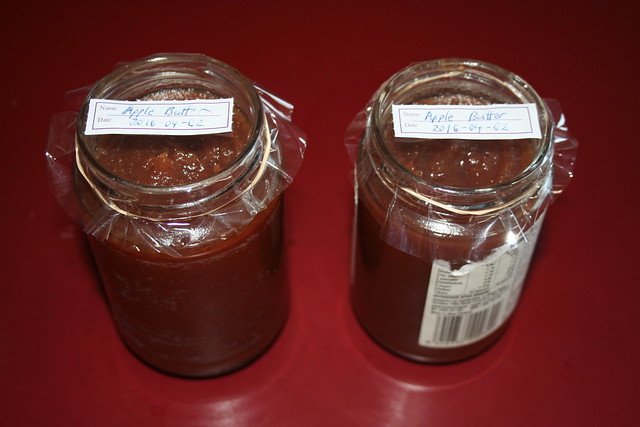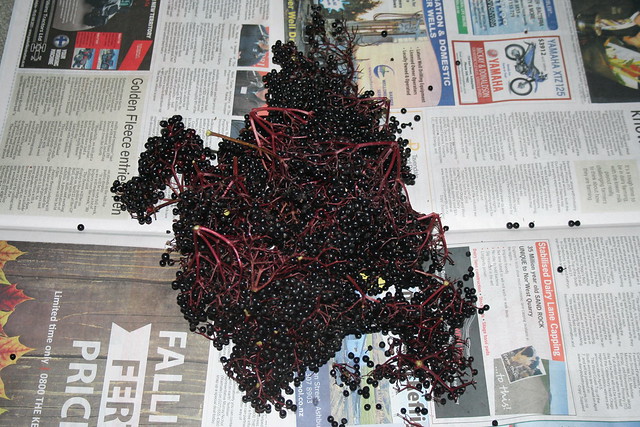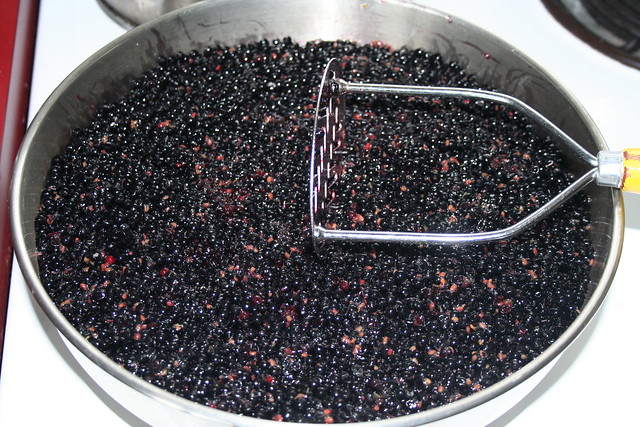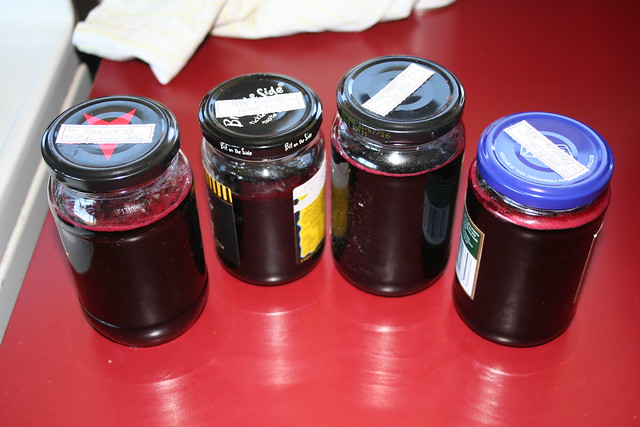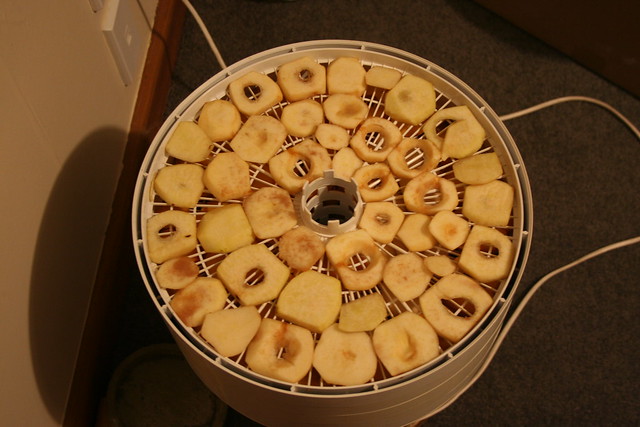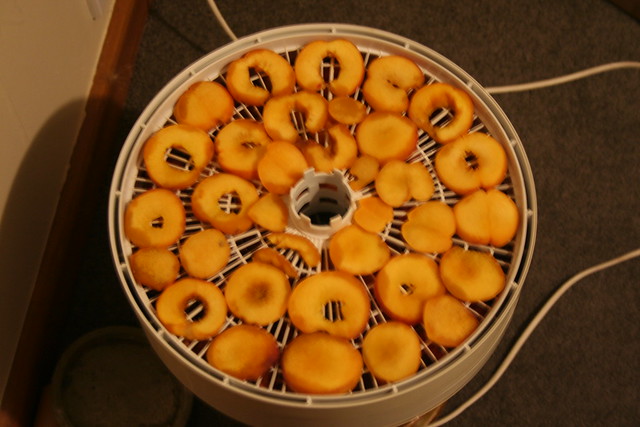Prickly Pear cactus tasty to animals 29 Jan 2018 2:11 PM (7 years ago)
I bought a Prickly Pear cactus from TradeMe. In theory, this is supposed to have horrific spines that get stuck into you, and ache away for months on end embedded into your hand or wherever. In practice, either rabbits or possums like the taste of it's pads. This makes me wonder if it is even a Prickly Pear cactus.
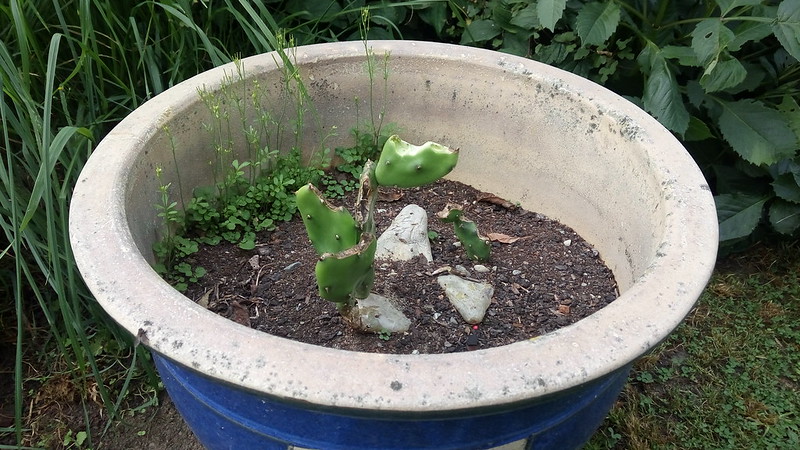 |
| Rabbit? Possum? |
Sunchokes, corn and garden beds 24 Oct 2017 2:59 PM (7 years ago)
There's been jerusalem artichokes growing in a garden bed for the past four years or so, but mostly they're given away. The grass grows over them in the dormant seasons, but they've just started to sprout again. It's been a goal to dig them up and replant maybe eight or so of the best in a different garden bed, clearing this one out.
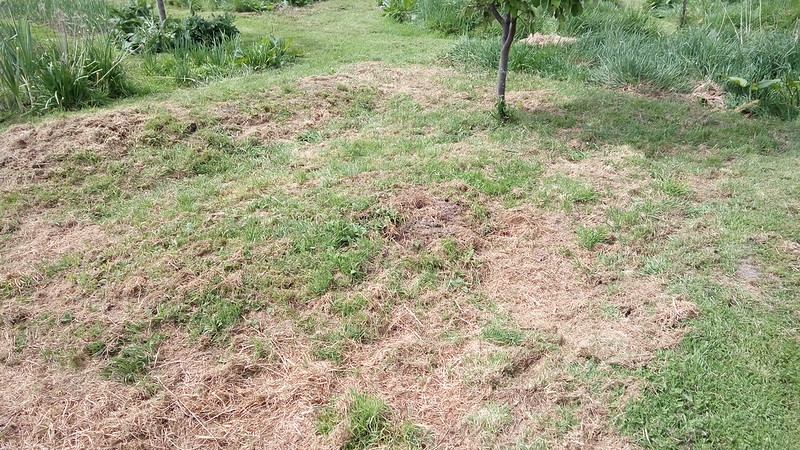 |
| Uncleared jerusalem artichoke bed |
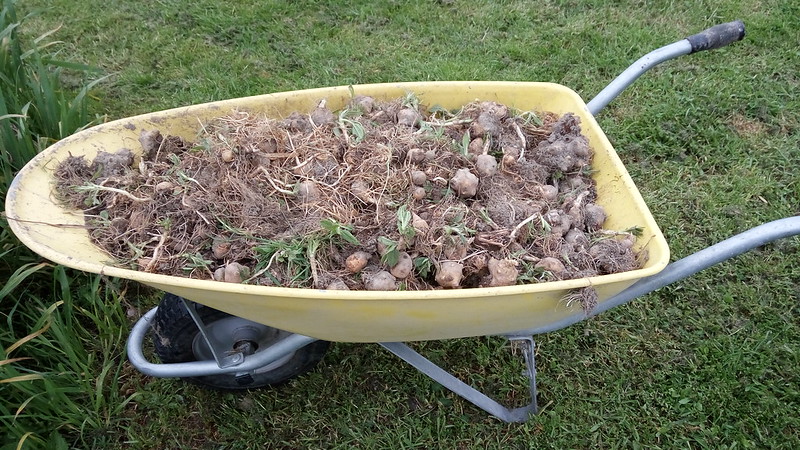 |
| Unwanted sprouting jerusalem artichokes |
This bed along with the two more closer towards the camera, were used for garlic last year. The small patch to the right in front of the freshly cleared and dug bed at the back, was used for yams. The rest of it was also cleared yesterday, which just leaves the one right at the bottom of the shot to be cleared.
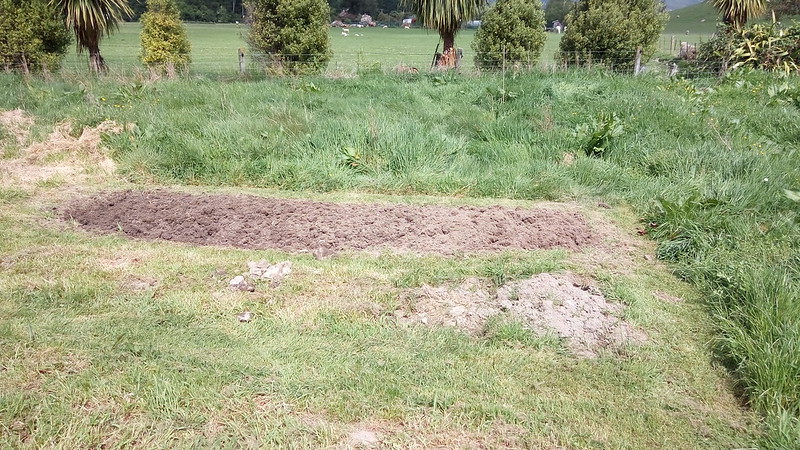 |
| Freshly cleared bed |
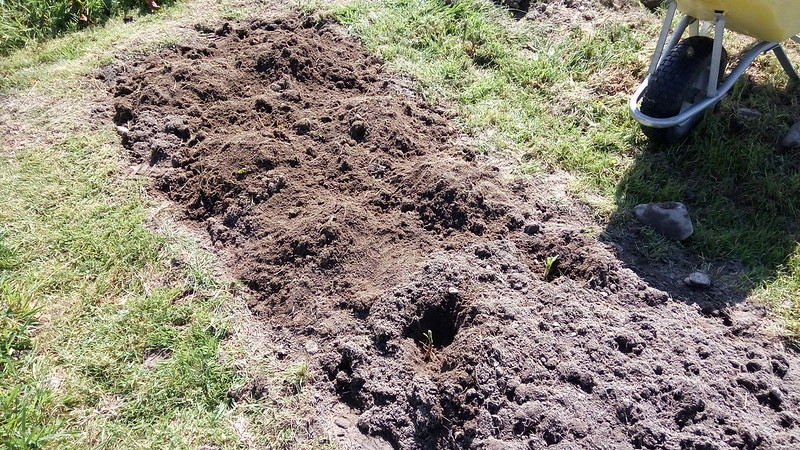 |
| Eight replanted jerusalem artichokes |
 |
| Killing the jerusalem artichokes |
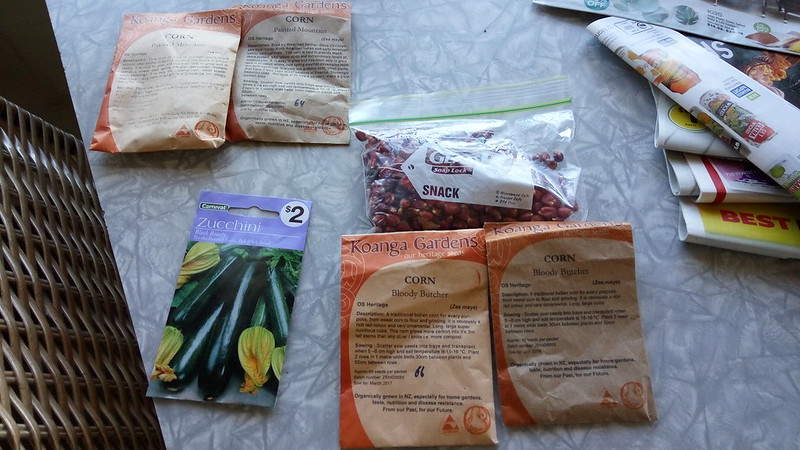 |
| Corn seed |
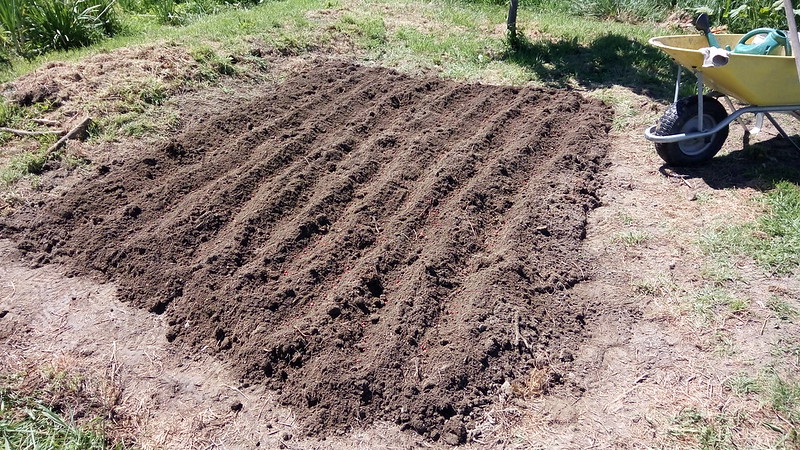 |
| Cown sowing |
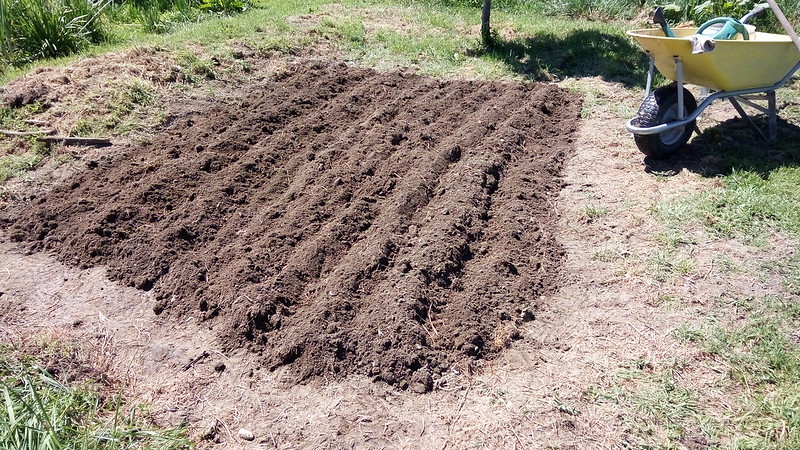 |
| Corn beds |
Oldest gooseberry bush 7 Dec 2016 10:11 PM (8 years ago)
I've just been out to check on my oldest surviving gooseberry plant. It's so heavily laden with fruit, that it's flattened out and most of the branches are laying if not curving down to lay on the ground. I need to do something about this, maybe thin out the fruit, or put some netting around it to hold up the branches, as it would be nice to get all that fruit.
Maybe also put bird netting around it. Though I did that last year, and a starling got in and ate all the fruit anyway. However, that netting was old grape netting and has the odd hole.
I took cuttings from this in the Autumn, none of them survived. The cuttings I had both from my other gooseberry plants, and received from other kind souls, all lived. Not sure why that was.
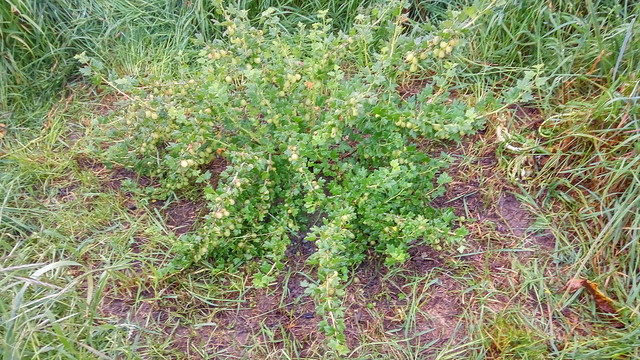 |
| Invicta Gooseberry |
Rhubarb, berries, pear tree, broad bean landrace and comfrey 2 Oct 2016 2:07 PM (8 years ago)
 I've made another video taking note of things that I've not recorded, or have visibly changed. This will be quite helpful in keeping track of things like having a visual record of which pear is which on the double-grafted one. You can't trust the nurseries and orchards and should check these things yourself, I've had several instances where they've botched things. And also noting the traits of individual varieties of broad bean in the landrace as they cross-pollinate from year to year.
I've made another video taking note of things that I've not recorded, or have visibly changed. This will be quite helpful in keeping track of things like having a visual record of which pear is which on the double-grafted one. You can't trust the nurseries and orchards and should check these things yourself, I've had several instances where they've botched things. And also noting the traits of individual varieties of broad bean in the landrace as they cross-pollinate from year to year.
It's another foggy Spring morning. The fog actually lifted earlier, and the sun was so low I almost had to close the blinds so I could work. The grass and dock have taken off in the past two weeks, as has the rhubarb. I'm going to have to clear the grass before making movies, or taking photos, as it is quite hard to see some things that are growing amongst grass.
I increased the quality the phone camera was recording, and used a weight to try and stablise the camera from shaking. In this case I basically sat the phone sideways on the rock and held it there, carrying it around. It seemed to make a difference, but wasn't perfect.
Mixing iteration and read methods would lose data 27 Sep 2016 8:41 PM (8 years ago)
I just upgraded to Python 2.7.12 and my code is now erroring with rather unhelpful Mixing iteration and read methods would lose data errors. Googling for this yields a number of StackOverflow posts where people are iterating over a file, and then within the loop, doing calls on the file. This sounds like a good error for their case, but in my case the fixes are somewhat more inane.
This errors:
persistence.write_dict_uint32_to_list_of_uint32s(output_file, { k: [] for k in read_set_of_uint32s(input_file) })
This fixes that error:
set_value = persistence.read_set_of_uint32s(input_file)
persistence.write_dict_uint32_to_list_of_uint32s(output_file, { k: [] for k in set_value })
Another error at another location:
persistence.write_set_of_uint32s(output_file, persistence.read_set_of_uint32s(input_file))Some simple rearranging makes this error go away:
set_value = persistence.read_set_of_uint32s(input_file)
persistence.write_set_of_uint32s(output_file, set_value)
And finally, the next error at another location:
def read_string(f):
s = ""
while 1:
v = f.read(1) # errors here
if v == '\0':
break
s += v
return s
And the fix for this:
def read_bytes(f, num_bytes):
return f.read(num_bytes)
def read_string(f):
s = ""
while 1:
v = read_bytes(f, 1)
if v == '\0':
break
s += v
return s
This error seems like a horribly broken idea, that is popping up in places it wasn't intended.
Grafting fruit trees, and various things growing 20 Sep 2016 7:28 PM (8 years ago)

I mention Koanga quite a bit for the grafts. Less than half the scion wood came from Koanga. The rest was traded with people on the internet for various varieties of scion wood I have here, and other things.
This year's apple cider vinegar 28 Jun 2016 2:38 PM (8 years ago)
This Autumn's batch of apple cider vinegar is coming along nicely. The mother, or at least I think that's what it is, appears to be floating on top. The last bottle from last year's batch is in use, so when this fresh batch is ready, is something that needs to be worked out.
Planting out persimmon seedlings 27 Jun 2016 7:15 PM (8 years ago)
Two summers ago, back in September 2014, I saved and planted out two persimmon seed from the local supermarket. I scarified them in the refrigerator over the preceding Winter, and put them in these two pots.
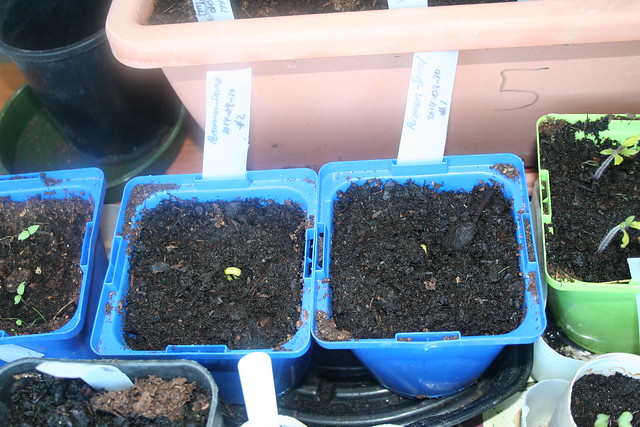 |
| September 2014 |
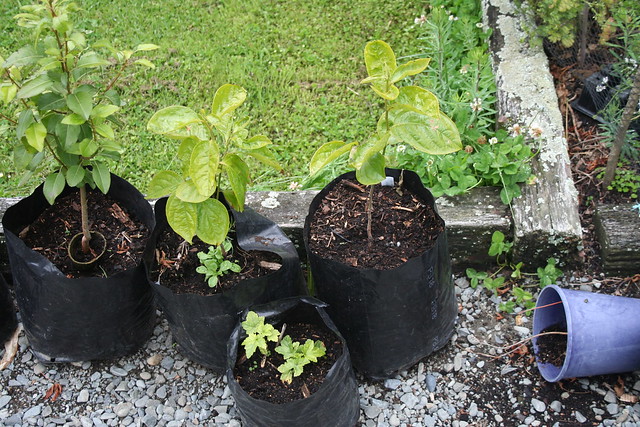 |
| December 2015 |
And here they are planted out. The older staked persimmon trees are more clearly visible in the background, and the midway seedling can be made out by the stones surrounding it.
As I finished planting these out the chickens came over and started scratching around them. The stones tend to prevent them from doing any damage, or digging anything out that's just been planted.
Winter pear 26 Jun 2016 2:36 PM (8 years ago)
In late Autumn, the Packham's Triumph pear tree flowered in one location and one of these flowers has since pollinated against.. well, I have no idea. Since then, at the start of Winter, it has gotten down to almost 0°C at least once and there have been white frostings on the ground, but the lone pear keeps growing.
Tree lucerne dying 25 Jun 2016 7:04 PM (8 years ago)
In the beginning, the idea was to buy or save seed and grow things. In theory what is a permaculture fantasy, in practice it just doesn't work out as idealised. One of the things I bought was tagasaste or tree lucerne seed, from Trade Me. What tended to happen was that I'd prepare the seed and remove the coats, and find spiders had been growing inside them eating the seed. Twice I did this.
In the end, I just went online and bought seedlings from Appleton's tree nursery. It cost me a few bob, but at least it resulted in actual trees and less time wasted.
Unfortunately, a few have been dying off. They tend to go grey, and I guess the roots die and they can just be pulled out of the soil. Two to the west of this one died a few months ago, not long after planting. This one has just started greying (look at the lower part of it) in the last month, I guess.
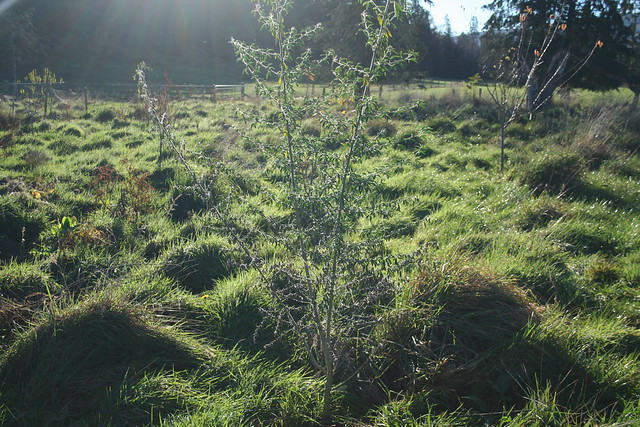
I have another six over the other side of the orchard, and they are consistently fine. They're sitting up on either side of the water race, so perhaps it's about the drainage.
Grapefruit seedling #2 24 Jun 2016 11:07 PM (8 years ago)
The second grapefruit seedling I grew is surprisingly alive. It's a bit more threadbare than the first, but then again it has to deal with the neighbour's herd of fence jumping sheep, and is generally in ground that's pretty dry and ridden with roots from nearby shrubs and other plants.
Cuttings and rooted canes 23 Jun 2016 6:59 PM (8 years ago)
Yesterday, while pulling up the boysenberry canes from under the grass, and staking them up in a poor mans trellis, I managed to break a few of the canes. Noticing that they had white roots, I decided to try and pot them for later replanting.
Behind the boysenberry, are two planter bags of cuttings of what I believe to be heritage "Gabrier's Gully Gold Field" gooseberry that someone went out and retrieved. Named for the location, rather than any particular variety. And behind that are two more planter bags of Invicta gooseberry cuttings.
Grapefruit seedling #1 23 Jun 2016 5:24 PM (8 years ago)
This grapefruit plant was grown from seed, in theory there's another planted out alongside the road, but I've not been out to check to see if it still survives.
Will the fruit from this taste okay? It'll be another couple of years before I get the chance to find out, I guess. Worst comes to worst, I have loose plants to try grafting things like finger limes onto it, if the fruit it bears are not worth eating or giving away.
Planting out blackcurrant cuttings 23 Jun 2016 5:21 PM (8 years ago)
A lot of my existing blackcurrant cuttings I've planted out, are of unknown varieties. The reason for this is that any way where a name or date is written on plastic, results in faded unreadable plastic within several months to a year. After that, it comes down to where whatever it was, was planted. And how reliably the notes are, if there are any.
In this case, I must have started my new tagging regime. This involves taking segments of coke cans, and inscribing the variety name on them with a sharp implement. So I am almost certain these are Cotswold Cross blackcurrant cuttings.
And here they are planted out in the paddock. The ground is still damp from the rain last night, but I watered them in anyway. The stones are to prevent the chickens from scratching them out of the ground, as has happened before.
All of these have the coke can labels around them, and are labeled on an orchard map. I'll still need to confirm they are the variety I think they are, based on written and internet descriptions. But I'll need to do that for all my fruit, as more than a few have turned out to be other than described by whoever they were sourced from.
Poor mans berry trellis 23 Jun 2016 5:13 PM (8 years ago)
Reading New Zealand fruit books and remembering what I read online, the gist was to cut away canes that had fruited, and to trellis the trailing canes for next year's fruit. However, one of the books says that generally brambles fruit on 2 year old canes, so how you identify what ones fruited last year I guess is a matter of experience.
I don't have the experience or tools to make a proper trellis, so I've just taken the poor man's approach. I basically uncovered all the trailing canes out of the surrounding grass, and tied them up the post with garden twine.
Here's the Tasman boysenberries:
And my neglected Brulee boysenberries. Unfortunately, these were set back when some grazing cattle ate them down to the ground. Their growth hasn't been spectacular since then.
I need to come up with a simple way of doing more extensive trellising.
Scionwood Exchange 21 Jun 2016 9:13 PM (8 years ago)
In New Zealand, have fruit trees or bushes and can graft cuttings or wanting to try?
I'm exchanging cuttings from my fruit trees this Winter, with some other interested people who have their own selection of fruit trees/bushes. If you're googling for scions/cuttings for grafting in New Zealand and have your own selection to exchange, please comment and we'll get in touch.
Here's my exchange list for Winter 2016:
- Almond - Monovale
- Apple - Granny Smith
- Apple - Montys Surprise
- Apple - Peasgood Nonsuch
- Apple - Splendour
- Apple - Cider - Brown's Eater
- Apple - Cider - Kingston Black
- Apple - Cider - Lady Finger Cider
- Apple - Cider - Yarlington Mill
- Apricot - Cluthagold
- Apricot - Moorpark
- Apricot - Royal Rosa
- Apricot - Unknown (older tree)
- Cherry - Lapin
- Fig - Brown Turkey
- Fig - French Sugar
- Grape - Albany
- Mulberry - Black
- Nectarine - Fantasia
- Nectarine - Goldmine
- Olive - Frantoio
- Peach - Black Boy
- Peach - Golden Queen (from seed)
- Peach - Yellow (Unknown, mislabeled Black boy from nursery).
- Peach - Flatto (still need to look at tree to see if can take cuttings).
- Pear - Packham's Triumph
- Pear - Winter Nellis
- Pear - Taylor's Gold
- Plum - Black Amber
- Plum - Coes Golden Drop
- Plum - Greengage
- Plum - Hawera
- Plum - Prune - Italian
- Plum - Santa Rosa
- Plumcot
- Quince - Smyrna
- Walnut - Unknown (decent sized nuts, reliable bearer).
- Citrus, Grapefruit, Golden Special.
- Currant, Black, Magnus.
- Currant, Black, Cotswald Cross.
- Currant, Red, Unknown (mislabeled White Currant from Mitre 10)
- Currant, Red, Unknown (unlabeled from nursery).
- Currant, Red, Gloria de Versailles.
- Gooseberry, Invicta.
- Artichoke, Jerusalem.
- Comfrey, roots.
- Garlic, Takahue Red.
- Yacon.
Yam harvest - Winter 2016 18 Jun 2016 6:44 PM (8 years ago)
There have been a few frosts and the yams have died back, so it's time to start harvesting before the grubs eat them all. Last year's harvest was a debacle and the grubs got most of them.
I planted late in January, as I had read that they don't really start growing until late anyway. Previous years I've put them in, in the Spring. But it doesn't seem necessary. I can't find the photos on flickr, so labelled and uploaded them.
2016-01-07: The bed has been dug and 90% of the stones put aside. The yams saved from last weeks harvest are sitting there in the egg cartons. They're survived the Winter pretty well, and the ones with cuts or damage were dipped in ash which seemed to do the trick.
2016-01-07: The yams all planted out.
2016-01-07: The netting has been laid down to prevent the free-ranging chickens from scratching the beds out, and a covering of hay has been scattered over top.
The bed pre-harvest today. Not bad looking considering the one time it was weeded, and perhaps two times it was watered. The problem with weeding was that pulling out the grass or whatever the weeds were, would easily pull out the yam roots. So it wasn't really possible to weed without damaging the crop.
Just pulling the netting off pulled out some of the better yams.
The recipient of the yams doing his own cleaning with the sieve I bought on recommendation from Rowan.
And the cleaned yams. I picked out 12 of the best and put them in a cupboard in an egg carton for next Spring's planting. I'll probably pick at least another two dozen as I harvest more.
Not bad for just the effort of one light weeding, perhaps two waterings (the Spring, Summer and Autumn were not that dry here), and the harvest of course.
Garlic Planting - Winter 2016 18 Jun 2016 6:24 PM (8 years ago)
These are the first two of three garlic beds I've planted this year, both used for the broad bean landrace last year. There's a wider third bed which was dug and planted out in several days of hot weather.
Here are the varieties and the beds they're planted in:
- Bed 1: Ajo Rojo (Trade-Me, 2016)
- Bed 2: Rocambole Early White (Koanga, 2016)
- Bed 2: Rocambole Early Red (Koanga, 2016)
- Bed 2: New Zealand Purple (Koanga, 2016)
- Bed 3: Takahue Red (Koanga, 2014, replanted)
Bed 2: Rocambole - Early White.
Bed 2: Rocambole - Early Red.
Bed 2: New Zealand Purple.
No photos were taken of the planting in beds 1 and 3. I think some of the varieties were sprouting already, perhaps the Ajo Roja. My memory is failing me. I had wanted to get these in earlier, but was too busy to prepare the two existing beds, and dig out the third one.
Broad bean (Fava bean) landrace year two 11 May 2016 12:40 AM (8 years ago)
I was originally planning to plant garlic in most of these beds, but garlic ideally goes in on the shortest day of the year which I think is still a month away. Broad beans however, when planted in the Autumn, are I am told best sprouted and a couple of inches high by the first frosts. But not high enough to flower. Last year I think I got them a bit late, and the odd seed popped out of the soil as the frosts hit them.
All of these beds are pre-existing ones, except for the one on the right with the stones alongside it. Those stones came out of the ground as I was digging it. There are two rows of two bean varieties in the two larger beds (front right and front left), and one row of two varieties in each of the three long beds behind.
The beds were not amended with anything other than a covering layer of home-made compost, and were prepared solely by breaking up the soil after removing the grass/weeds that had grown over them since Spring or whenever whatever was in them was harvested. Two beans are planted together at each spot along each row, and the weakest will be either transplanted or discarded. I used the English RHS planting recommendations, which I think were 60cm between double rows, and around 23cm between each of the rows in the double rows, and 20 cm between each planting in along a row.
The selection criteria for now is whatever grows best, given no fertilisation other than the compost. And as this is the second year all these varieties (around 10) have been grown alongside, there should ideally be some visible sign of cross-pollination. Of course, they were completely neglected last year, so hopefully there was some cross-pollination. In any case, I came out of last year with more seed than went into it, so it wouldn't be a complete loss if cross-pollination between varieties is poor.
I'm hoping to find the time to get a paint brush and hand-pollinate maybe the first five plants in each row, perhaps as a limited but doable experiment that doesn't require too much time investment.
Apple butter revisited 9 May 2016 1:07 AM (8 years ago)
Gave away a jar of apple butter today, and we all tried a bit. I have to say I was pleasantly surprised, as it was a thick spreadable paste with a strong tangy flavour. Everyone liked it. Of course, I dumped a lot of sugar into the pot in order to give it a better chance at preservative qualities, and in theory I think there could be a kilogram of sugar between two jars - which was not so appealing.
Either I need to get a sweet apple variety, which does not require added sugar, or to work out the repercussions of not adding sugar to the less sweet varieties.
If you're thinking of making apple butter, I'd recommend giving it a go. In theory it's a shelf stable preserve that does not require pectin for it to set. Really, really simple to make.
Green Mountain Potato Onion 9 May 2016 12:39 AM (8 years ago)
I quite like the idea of potato onions, as I understand them.
There are crops which are grown by giving people vegetables to replant, like potatoes for instance, where rather than getting seed to grow, you get given pre-grown tubers to plant, which sprout and grow more tubers.
One of these crops, is the potato onion. From what I understand it was rare for them to go to seed, and seed just wasn't available. Then they went to seed for one guy somewhere in the states, and he saved the seed, and gave some away or sold it.
Normally, when you plant a onion seed, it grows one onion. So you need to plant at least as many seeds as you want to have onions to harvest. The potato onion however, once it has grown, is supposed to split into multiple bulbs per plant.
I got sent some potato onion seed, which was imported from the USA via Australia. I've grown out around 22 seedlings, which can be seen below. This was a germination test, but I planted them out for the same of it and it can't hurt to see if they survive the upcoming Winter. The green allium in the foreground is garlic chives.
I plan to plant out a lot more in the Spring, with the intent of getting some to go to seed, so I can expand the amount of seed I have.
Japonica 4 May 2016 7:08 PM (8 years ago)
I check out the roadside fruit trees whenever I am out and about, and in this case, I found something I hadn't seen before. Asking online, I was told that it was Japonica, and was a kind of quince. So in theory it could be used to make jellies and those sorts of things that quince can be used for.
I need to research what I can graft this to, and if I have something suitable, I might do that in the late Autumn.
Apple Butter 2 May 2016 6:58 PM (8 years ago)
I've been curious about trying to make apple butter. In theory, if the apples you cook are sweet enough, it shouldn't be necessary to use anything else to make it other than apple. This post won't tell you how to make it, but I'll make some observations in case you follow the recipe I used.
I was inspired to make it, because one of the nearby roadside apples is very sweet tasting. I had tried to buy a sweet apple variety in the past for my orchard, but the nursery who sells the more niche varieties had none at the time.
Anyway, I used a borrowed juicer which someone long ago bought for a juicing diet.
This gave a quantity of apple juice. The discarded apple material was also dehydrated at the same time.
Next the space in a container that the juice occupied was filled with whole apples. These were then peeled, chopped and added to the simmering juice.
And this in turn was reduced until it was thick and caramel-like, and set on a chilled plate.
After which it was poured into two sterilised jars, covered, labelled and stored in the cupboard.
This really needs a larger deeper pot, and a splatter guard. The stove and surrounding benches, and to some degree other various things had spots of apple over them when it was done.
Elderberry jelly 30 Apr 2016 6:50 PM (8 years ago)
One of the bedrooms has an elderberry tree outside the window. It was laden with elderberries, so I picked two kilograms and found a recipe to make elderberry jelly.
The first step was to remove as much of the stems and occasional leaf material as possible.
Then to mash them lightly in a pan, and to heat it up and some other stuff. Eventually straining out the juice removing the skins and stones. The main thing was to not crush the stones too much because they're the toxic part.
I added sugar and a pectin mix from the supermarket. This pectin mix is expensive and contains sugar already, but not enough sugar, so you need to factor in how much sugar they included with your own sugar. I've since bought some pure pectin to use instead, so it's more straightforward in future.
Here's the result. Four reused jars and seals. The jars were heated in the oven, and the lids boiled. None of the lids had damaged insides, where there are slight rusted bits, like there sometimes are in these lids. And all the seals popped as the jars cooled. There was some condensation inside the jars, but I read on the internet that this gets absorbed by the preserved fruit/vegetable and goes away.. which it did.
The juice tasted quite nice, and would be nice to try in a syrup next year. I'll leave these on the shelf to try in the winter.
Dehydrating apples and peaches 29 Apr 2016 6:48 PM (8 years ago)
The last of my peaches were ripe, so I decided to dehydrate them. As with pears, I'm not sure that peaches really taste like anything special dehydrated. I'll probably try and use them for cooking, otherwise they just get snacked on for the sake of snacking by anyone they are offered to.
These were roadside apples of various flavours and textures.
Then, there's the Blackboy peach tree I bought from Southern Woods nursery several years back. Note that it looks to be a Golden Queen peach. It was the first year this tree fruited, and I have to say that I'm glad it is a Golden Queen. Who needs two Blackboys? And they were fat juicy fruit.
The Blackboy peach tree was already present when I moved into this property. It seems to have some pest problem, and gets marks which are filled with crystalised stuff. Probably some obvious pest like codling moth for all I know. I need to look into it for next year.
Got a decent amount of bagged dehydrated peach in the cupboard, and huge jars filled with dehydrated apple.
